Project Description
Polymer Modified Bitumen (PMB) would be special grades of Bitumen that must have Elastic recovery and Aras Petrochemical production team after many years experiences in the base of Bitumen producing is producing different grades of Polymer Modified Bitumen or PMB Bitumen that have ability to maintain the bitumen properties in Highest Temperature and lowest temperature of the clients countries climates.
| Name | Polymer Modified Bitumen |
| Manufacturer | PETRO-ACC |
| Made In | Aras Petrochemical Company |
| Product Grade | PMB |
POLYMER MODIFIED BITUMEN FEATURES
Polymer Modified Bitumen (PMB) is a type of bitumen that has been enhanced with polymers to improve its properties. This modification results in several beneficial features:
Enhanced Elasticity: PMB exhibits greater elasticity compared to conventional bitumen, which helps it to better accommodate thermal movements and resist cracking.
Improved Temperature Stability: It can withstand a wider range of temperatures without losing its structural integrity. This means better performance in both hot and cold climates.
Increased Durability: PMB is more resistant to deformation, fatigue, and aging, resulting in longer-lasting pavements and reduced maintenance costs.
Better Adhesion: The polymers improve the adhesion between the bitumen and aggregates, leading to better overall performance of the asphalt mix.
Improved Resistance to Rutting: The enhanced properties help the pavement resist rutting and deformation under heavy traffic loads.
Superior Water Resistance: PMB shows better resistance to water damage, which helps prevent issues like stripping and potholes.
Flexibility: This type of bitumen is more flexible, making it suitable for a wide range of applications including roads, bridges, and airport runways.
Higher Resistance to Oxidation: The polymers help in reducing the rate of oxidation, thus maintaining the binder’s properties for a longer period.
Enhanced Load Bearing Capacity: PMB can bear heavier loads and stresses, making it ideal for high-traffic areas and heavy-duty pavements.
Noise Reduction: Some PMB formulations can also contribute to noise reduction, making them suitable for urban areas where traffic noise is a concern.
These features make Polymer Modified Bitumen a preferred choice for infrastructure projects requiring higher performance and durability.
POLYMER MODIFIED BITUMEN APPLICATIONS
Polymer Modified Bitumen (PMB) is widely used in various applications due to its enhanced properties compared to conventional bitumen. Here are some key applications:
1. Road Construction
Flexible Pavements: PMB is extensively used in the construction of flexible pavements, where it provides better resistance to deformation, rutting, and cracking.
Highway and Expressway Surfacing: Due to its improved durability and performance, PMB is ideal for highways and expressways, which experience heavy traffic loads.
Airport Runways: The superior resistance to high and low temperatures makes PMB suitable for airport runways.
2. Waterproofing
Roofing: PMB is used in roofing applications to provide enhanced waterproofing, resistance to UV radiation, and longer lifespan.
Bridge Decks: Waterproofing of bridge decks with PMB helps in preventing water ingress and subsequent damage to the structure.
3. Industrial Applications
Damp-proof Membranes: PMB is used in the construction industry as a damp-proof membrane to protect buildings from moisture.
Tank Linings: Its resistance to chemicals and high temperatures makes PMB suitable for lining industrial tanks and containers.
4. Railway Track Bed Construction
PMB is used in the construction of railway track beds to provide better load distribution and durability.
5. Sports Tracks and Playgrounds
Due to its elasticity and durability, PMB is used in the construction of sports tracks, playgrounds, and other recreational surfaces.
6. Mastic Asphalt
PMB is used in mastic asphalt for applications requiring high durability and load-bearing capacity, such as industrial flooring and parking areas.
7. Sealing and Jointing Materials
PMB is used in the production of sealing and jointing materials for pavements, bridges, and other construction projects to provide better adhesion and flexibility.
8. Railway and Tramway Systems
It is also used in the construction of railway and tramway systems to improve the performance and longevity of the tracks.
Benefits of Polymer Modified Bitumen:
Enhanced Performance: PMB exhibits improved resistance to deformation, fatigue, and thermal cracking.
Increased Durability: The use of PMB leads to longer-lasting pavements and structures.
Temperature Resistance: PMB performs well under a wide range of temperatures, making it suitable for various climates.
Reduced Maintenance Costs: Structures and pavements made with PMB require less frequent maintenance and repairs.
Polymer Modified Bitumen is an essential material in modern construction, offering significant improvements over traditional bitumen in terms of performance, durability, and versatility.
POLYMER MODIFIED BITUMEN FORMULATION
The formulation typically involves blending bitumen with various polymers to improve its properties, such as elasticity, temperature susceptibility, and durability.
Key Components and Their Functions
Base Bitumen: The primary ingredient, providing the base properties of the material.
Polymers: Added to improve elasticity, strength, and temperature resistance.
Styrene-Butadiene-Styrene (SBS): A commonly used polymer that enhances elasticity and toughness.
Ethylene Vinyl Acetate (EVA): Improves flexibility and adhesion.
Polypropylene (PP): Increases stiffness and heat resistance.
Cross-Linking Agents: These are used to chemically bond the polymers to the bitumen, enhancing stability.
Stabilizers: Help maintain the mixture’s properties over time.
Anti-Stripping Agents: Improve adhesion between the bitumen and aggregates, reducing moisture damage.
Fillers: Fine materials like limestone powder to improve the mixture’s volume and stability.
Formulation Process
Selection of Base Bitumen: Choose a bitumen grade suitable for the intended application (e.g., penetration grade 60/70).
Polymer Selection: Choose the polymer(s) based on desired properties.
Blending: The bitumen is heated to a high temperature (typically around 160-180°C) to ensure proper mixing.
Shear Mixing: High-shear mixers are used to blend the polymer into the bitumen thoroughly.
Dosage: The polymer content typically ranges from 3% to 7% by weight of the bitumen, depending on the desired properties.
Addition of Stabilizers and Agents: Stabilizers, cross-linking agents, and anti-stripping agents are added during mixing to ensure uniform distribution.
Cooling and Storage: After mixing, the PMB is cooled and stored under conditions that prevent degradation.
Properties of PMB
Improved Elasticity: PMB can recover its shape after deformation, which is crucial for resisting rutting and cracking.
Enhanced Temperature Susceptibility: It performs better in both high and low temperatures, reducing issues like thermal cracking and softening.
Increased Durability: The addition of polymers improves the lifespan of the pavement, making it more resistant to wear and tear.
Better Adhesion: Anti-stripping agents enhance the bond between bitumen and aggregate, reducing the risk of stripping under wet conditions.
POLYMER MODIFIED BITUMEN PACKING
Drums: PMB is often packed in new steel drums. These drums have capacity of 180 kg . Drums are convenient for transport and storage but require handling equipment for unloading and application.
Bags: Sometimes, PMB is packed in jumbo bags, especially in solid form. These bags usually contain a specific weight of bitumen, making it easier to handle and use on-site.
Bulk: For large-scale projects, PMB can be transported in bulk using tankers. This method is cost-effective for large quantities but requires appropriate facilities at the receiving end for storage and further use.
POLYMER MODIFIED BITUMEN SPECIFICATION
General Specifications
Base Bitumen:
Bitumen used as the base material should conform to the relevant national or international standards (e.g., ASTM, AASHTO, or local standards).
Polymer Content:
The type and percentage of polymer added vary depending on the required properties and the specific application. Common polymers include Styrene-Butadiene-Styrene (SBS), Ethylene-Vinyl Acetate (EVA), and others.
Typical polymer content ranges from 3% to 7% by weight of the bitumen.
Physical Properties
Penetration (25°C, 100g, 5s):
The penetration value should be lower than that of the base bitumen, indicating increased stiffness.
Typical values: 30-90 dmm.
Softening Point (Ring & Ball method):
The softening point should be higher than that of the base bitumen, indicating improved resistance to high temperatures.
Typical values: 60°C to 80°C.
Elastic Recovery (at 25°C):
This indicates the ability of the modified bitumen to recover its original shape after deformation.
Typical value: > 50%.
Viscosity:
Viscosity should be higher than that of the base bitumen, indicating better performance at high temperatures.
Typical values at 135°C: 1.5-3.0 Pa.s.
Performance Properties
Storage Stability:
PMB should remain stable without phase separation during storage.
Stability tests are conducted at 160°C for 48 hours.
Fatigue Resistance:
PMB should have improved resistance to fatigue cracking, which is tested using various laboratory methods.
Thermal Susceptibility:
PMB should exhibit lower susceptibility to temperature variations compared to unmodified bitumen.
Environmental and Safety Considerations
Temperature Sensitivity:
PMB should maintain its performance properties over a wide temperature range.
Health and Safety:
The production and application of PMB should adhere to safety guidelines to minimize health risks.
Example Specification for SBS Modified Bitumen
Base Bitumen:
Penetration Grade: 70/100
Polymer Type:
SBS (Styrene-Butadiene-Styrene)
Polymer Content:
4% by weight
Physical Properties:
Penetration at 25°C: 40-60 dmm
Softening Point: > 70°C
Elastic Recovery at 25°C: > 60%
Viscosity at 135°C: 2.0 Pa.s
Performance Properties:
Storage Stability: No significant phase separation
Fatigue Resistance: Improved compared to unmodified bitumen
Thermal Susceptibility: Reduced compared to unmodified bitumen




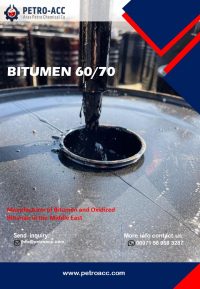
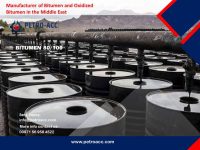
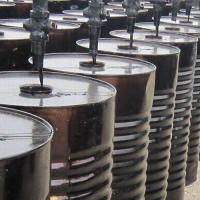
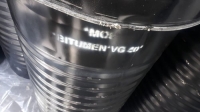
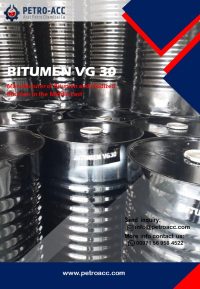
Leave A Comment